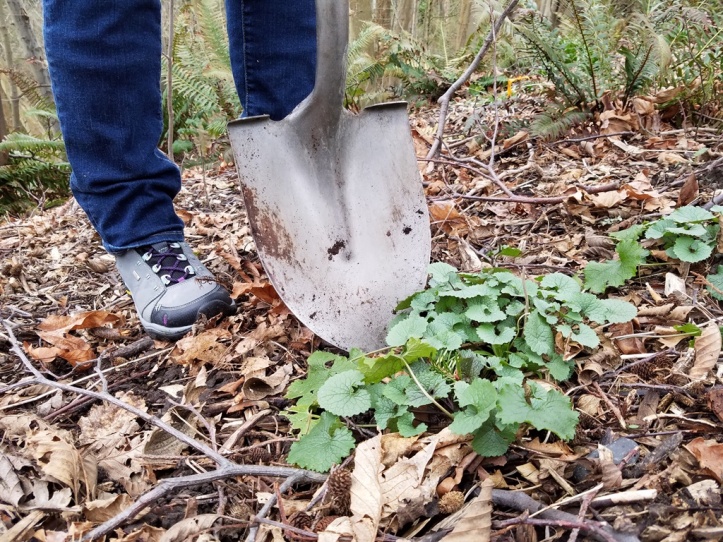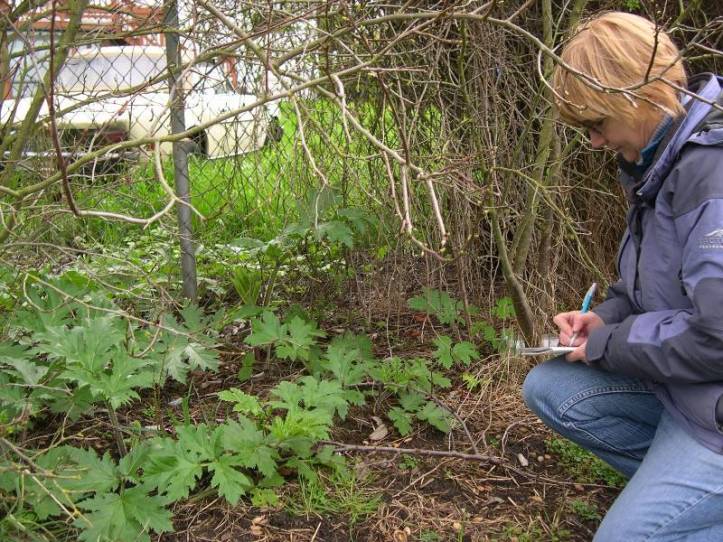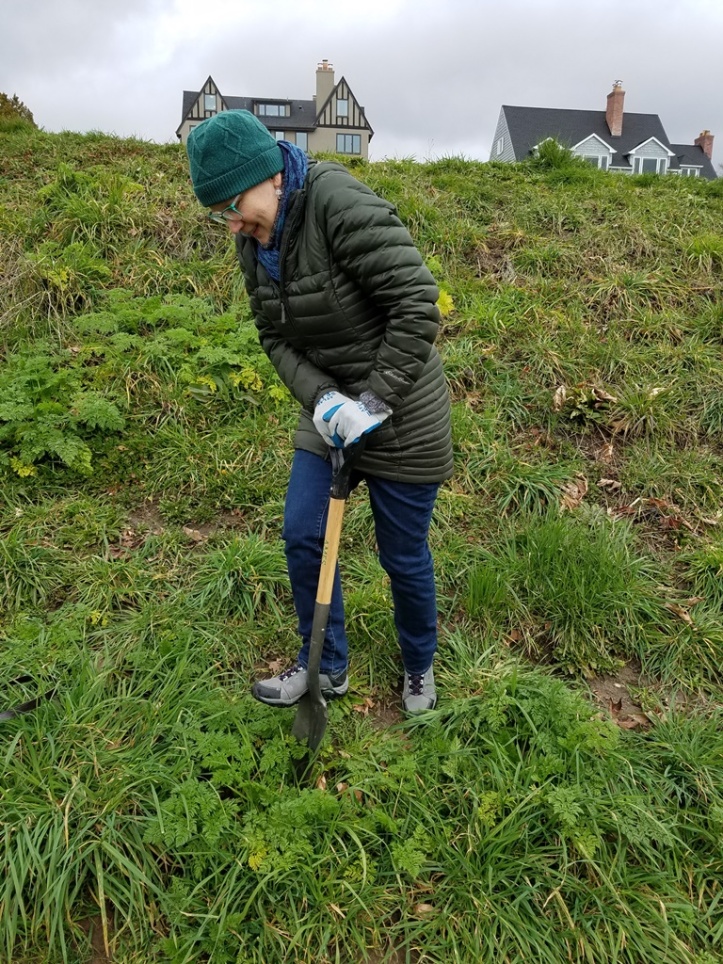It might still be snowing in the mountains, but it’s not too early to find noxious weeds starting to emerge. On a recent tour of a few Seattle locations with noxious weed specialist Karen Peterson, I was able to find quite an assortment.
We found garlic mustard rosettes that survived the winter starting to grow again. Look for low-growing clumps of kidney-shaped leaves with lobed edges. Don’t confuse them with the native woodland plants they resemble. Garlic mustard leaves aren’t at all fuzzy and they smell like garlic. Also, the root is usually curved.

We found these garlic mustard plants at Kiwanis Ravine in Seattle, where volunteers and city staff have been working for several years to get rid of it. In spite of their efforts, plants continue to emerge from seeds in the soil or from dirt that’s been brushed off workers’ boots at the edge of the park. Please report to us any garlic mustard locations. Send us photos if you aren’t sure. We can’t stop it from spreading if we don’t know where it is!

Giant hogweed is also emerging now and is fairly easy to spot, unless it’s growing in a blackberry thicket. Look for jagged-looking, bright green leaves and stems with stiff white hairs and purplish-bumps. The sap causes burns so definitely wear gloves and long sleeves when digging it up. Please report where you find hogweed growing so we can search the area for more plants.



Poison-hemlock is very conspicuous in March. The leafy clumps are bright green and taller than most grass this time of year. Look for parsley-like leaves and hairless stems with purple-reddish blotches. This plant is poisonous, so wear gloves when you dig it up.



Italian arum’s mottled leaves will be easy to find. Look for places where yard waste is dumped or near where it has been planted in the past. Small animals move around the tubers as well, so it can show up in odd locations in the woods as well. Leaves contain an irritating compound, so gloves are important for this plant as well.

Bull thistle is the thistle you are most likely to notice this month. The very hairy, very spiny leaves are in low-growing rosettes still, but the dark green leaves covered with white hairs make the plants distinctive. Although this plant isn’t poisonous, the sharp spines make it hard to handle without thick gloves.

Spurge laurel is an invasive species of Daphne. You can see the small, green flowers in March that will form into black fruits later in the year. Spurge laurel fruits are toxic to people, but birds eat them and spread the seeds to new locations. The leaves are laurel-like, but the plant looks more like a Dr. Seuss invention, leggy stems with clumps of shiny green leaves near the tops. This plant also has a caustic sap so take care when digging it up.


Find out about more noxious weeds on the King County Noxious Weeds website or the Washington State Noxious Weed Board website.
Thank you so much for posting these pictures and information. I see that we have bull thistle in our yard (and I can now identify and treat it). Looking forward to the noxious weed class coming up!
I’m glad to hear it was helpful and thanks for the feedback!
Super helpful. Thank you!
Thank you, this is so helpful
Loved this, the pictures are great, I need all of this information..Thank You.
Thanks!
Just dug a Poison-hemlock out of my yard thanks to your post. Thank you!
Excellent! So glad it was helpful.